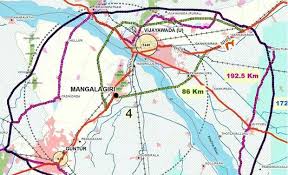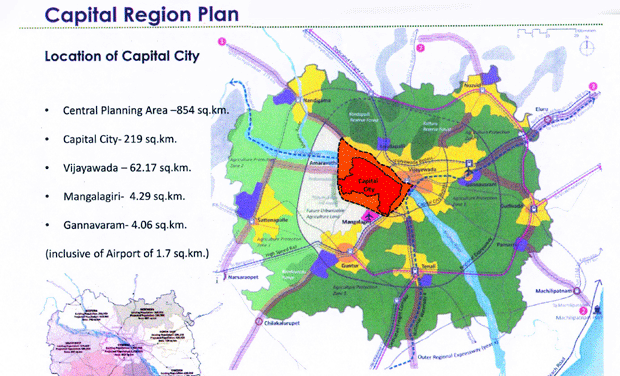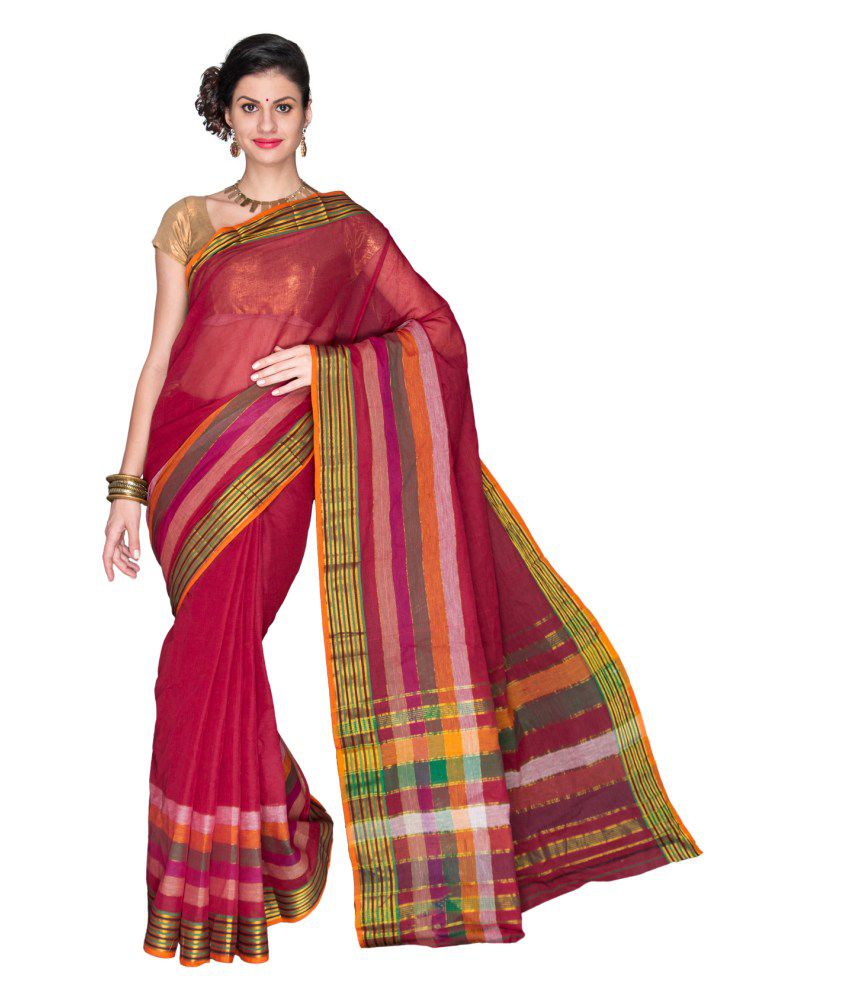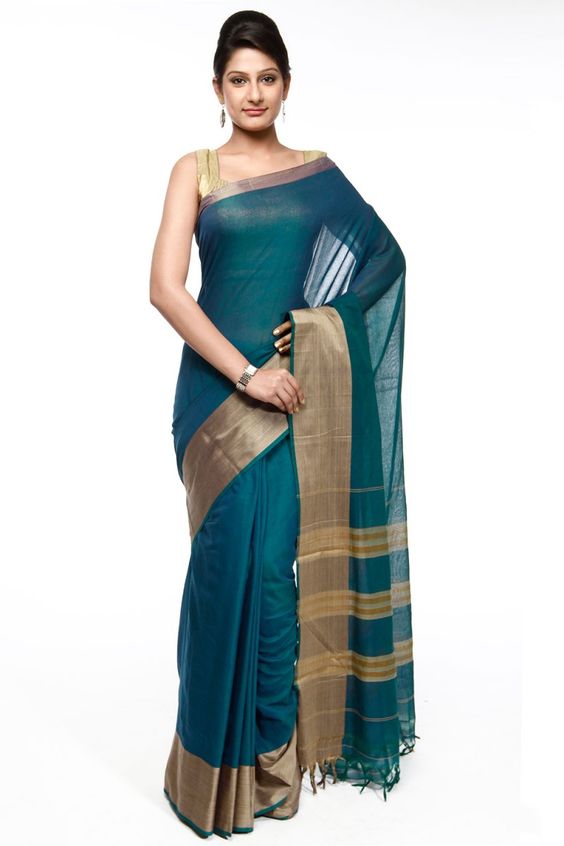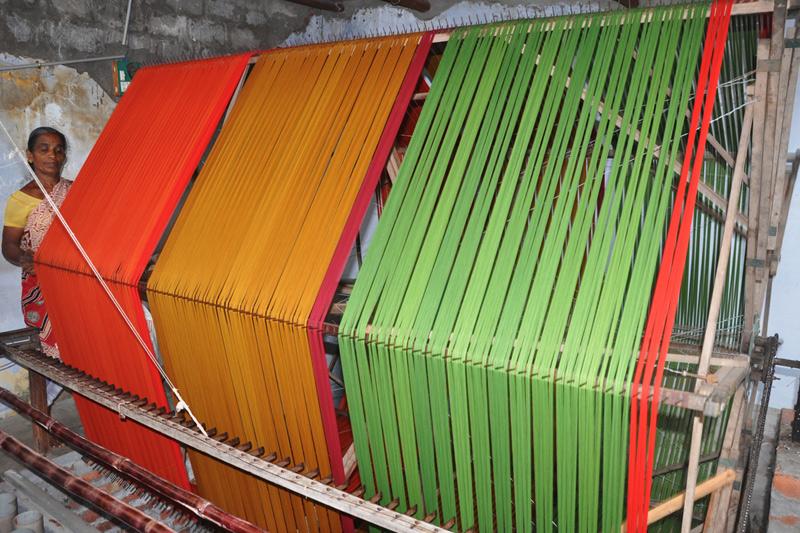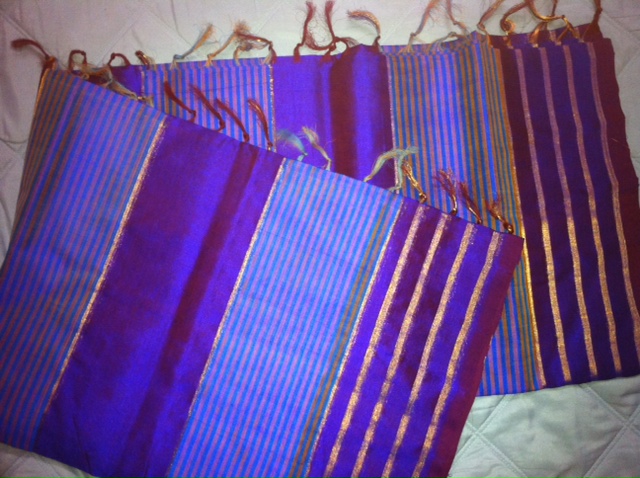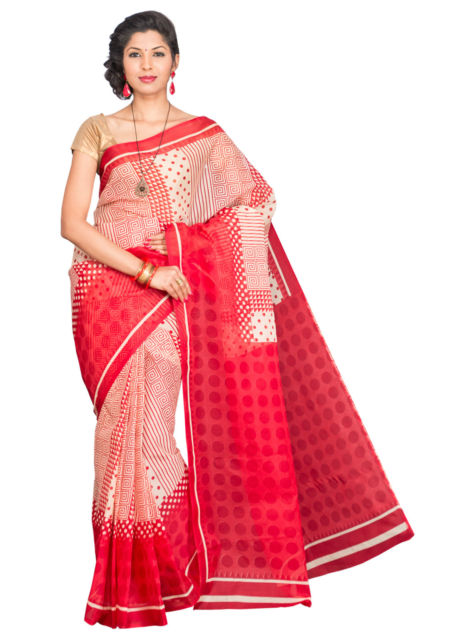 Hullo, hullo, everybody 😉 , I am back this week to continue our series on Andhra Sarees. Last time we covered the Madhavaram. This week is another one starting with ‘M’. That is the Mangalagiri Saree.
Hullo, hullo, everybody 😉 , I am back this week to continue our series on Andhra Sarees. Last time we covered the Madhavaram. This week is another one starting with ‘M’. That is the Mangalagiri Saree.
History
Meaning ‘Auspicious Hill’, Mangalagiri is a famous town in the newly setup State Capital Region. Located in the greater Amaravati area, it is known for its beautiful and tall gali gopuram in the Lakshmi Narasimha Swami Temple.
This was constructed by the Vijayanagara Emperors and finished by Vasireddy Venkatadri Naidu, Raja of Amaravati. While they prospered under the Kakatiyas, weavers in the region later fled after having had to endure the oppressive taxes of the Qutb Shahis. They were liberated by Krishna Deva Raya. They later came under the rule of the Vasireddis, who are associated with the Narasimha Swami temple.
The presiding deity, this Avatara of Vishnu is worshiped with Jaggery water. Sweet like the language of Telugu, this Panakam dish gives the name Panakala to the first of the temples. With three temples dedicated to Narasimhaswami, Mangalagiri is more than just part of the administrative capital, it represents the lion and lioness spirit of the Andhras. Hence, like our legendary dynasty of queens and kings who were known by their mother’s name, Mangalagiri represents the strength and pride of place the women of Andhra have in their society, and now again, capital.
The ksheera vrksha (milk tree) there is particularly auspicious for women. There is also a main festival therein Phalguna masam (february-march month). The shape of the hill of Mangalagiri is in that of an elephant. Hence, like the famous charming hasthiniini walk that ancient beauties were described as having, this saree too represents the allure of Andhra women.
A stone’s throw away from Amaravati, Mangalagiri is the saree of the AP’s administrative capital. Women of the region are both traditional and trendy. Like the rajdhani represents all the shades of Andhra, the Mangalagiri Saree showcases a variety of different colors from around the state. It is an evening wear saree with a fresh look, perfect for summer evenings at the temple or official events. Like Andhra, it is bright but classy. It catches the eye in a refined way rather than a gaudy one.
Characteristics
Mangalagiri is recogizable by its border. These are emphasized more than the body of the saree itself. Most obvious is the double border, which is rarely found in other sarees. ‘Getti anchu’ means solid border, which like this saree, means the lady wearing it immediately becomes the center of attention. They frequently have parallel lines that adorn it like the famous gopuram of the town. While it is refined in its silk look, it has a handwoven cotton base. This gives it a widely-prized softness and durability.
Because of the cotton mix, it keeps the body cool in the hot summer of Krishna District. This style also represents Krishnamma, who is the personification of the Krishnaveni River. She too is elegant while retaining the traditional look and feel of the region. Kanakadurga in nearby Vijayawada also has this auspicious beauty.
Mangalam antey Mangalagiri
Styles
A traditional saree that is increasingly getting a modern look, the Mangalagiri saree is found in different styles. You can get the traditional patterns. You can get sico-cotton look, which is more everyday, and the pattu look which is the rich silk feature we see at the very top. This second style makes it a very rich saree.
Thread count varies from 40 (coarse) to 120 (superfine). It frequently has a gossamer or translucent weave that is ideal for export. Traditional motifs include “leaf, mango, parrot, gold coin, rekhu “. They come in:
- Plain Color-For a bold look.
- Striped-These range from bright to earthen hues
- Checks-Identifiable & traditional with organic dyes & kalamkari block print
- Mixed-Combination of different patterns and silk cotton
Industry
Considered one of the finest examples of the handloom cotton industry, Mangalagiri, like the capital of the Andhras, has stood the test of time. This carefully woven weave is prized throughout India.
It is has a very structured process of manufacture as well. The yarn is colored and dyed, and then starched and bleached. The warping makes sure the color doesn’t fade. After that, it is spun by traditional Charkha. Now made into thread, it is woven in various forms on warp and weft using pit looms. This process usually takes a week. Here is a great walkthrough of the process.
This industry is driven by 5000 traditional weavers who inherited a traditional craft, representing the spirit of Andhra. While sarees today are increasingly showing the machine look, Mangalagiris are handcrafted to perfection, and it shows. Finely woven, they are a must have for all true Telugus.
Andhra Rajdhani Saree
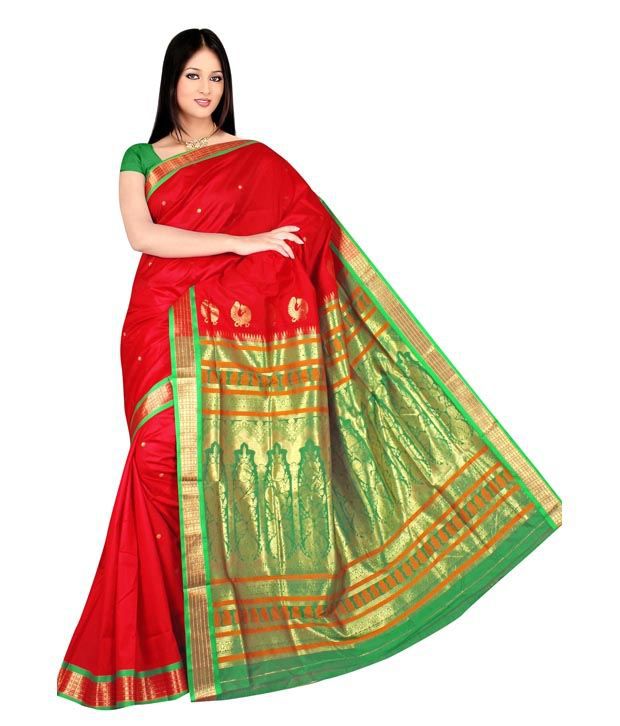
Andhra’s Capital Saree
References:
- http://www.mangalagiri.net/temple/temple.html
- http://www.templenet.com/Andhra/mangalagiri.html
- http://www.utsavpedia.com/textiles/mangalgiri-sari-from-the-fine-edges-of-andhra-pradesh/
- http://www.dsource.in/resource/cotton-sari-mangalagiri/warping/index.html
- http://mangalgiri.com/index.php/mangalgiri-weavers-world
- http://mangalagiricotton.com/sarees/
- http://swadesh.unnatisilks.com/finely-crafted-cotton-weaves-mangalagiri/
